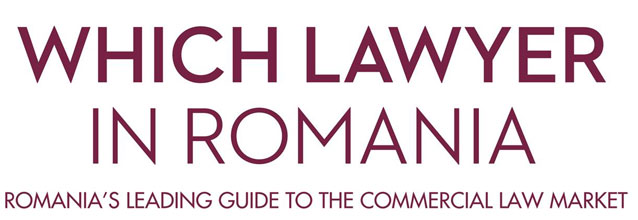
Even though the Romanian banking system as we know was not critically endangered and overexposed to sub-prime assets, still it is difficult to calculate how much of the loan volume is healthy. The shift of banking activity from giving loans to calling in the lent money and restructuring bad credit is an ongoing process even in 2016. In a market that is still posting impressive profitability results, banks are still working on figuring out how to keep those profitability margins in a shrinking base of eligible clients.
“It is fair to say that the economic crisis resulted in a change of perspective in the approach of doing business in all sectors of the economy, but, indeed, the banking field was particularly affected. Despite the negative forecast, the banking sector has experienced a steady increase in profitability starting with the first quarter of 2015 and continuing up to present. More specifically, the financing and, especially, refinancing markets recorded an important development in the past two years, while the rate of non-performing loans has reduced. Factoring has also seen an impressive development on the market in last years,” argues Monia Dobrescu, Partner Musat & Asociatii.
There is no question that the banking system is tarnished with the stigma of responsibility for most of the bad stuff that is happening in today’s economy. The ongoing financial and economic context that has affected the banking system since the beginning of the crisis has impacted heavily on all sectors, even creating a blockage in some areas where risk has become too high for banks to finance. As banks become more cautious and regulation framework complex the need of specialized legal services translates into an opportunity for law firms.
The regulatory framework becomes tighter and thus, in the process of offering banking products and services and entering into agreements with their clients, banks must permanently monitor and check for compliance multiple regulatory aspects, including competition matters, anti-money laundering aspects, consumer protection, data privacy, tax, e-payments, etc.
“As the market develops, the aspects to be addressed become more and more complex and require a thorough understanding of the Romanian and European regulatory framework in order to be able to provide meaningful and practical, business oriented, legal advice,” says Alina Radu, Partner and Banking and Finance practice coordinator at Nestor Nestor Diculescu Kingston Petersen. She adds: “on the transactional side, the process of dealing with sub-performing and non-performing loans continues (being also influenced by the changes in regulations and the NBR recommendations) resulting in an increase of the restructuring and recovery work, as well as in NPLs trading. These areas require lawyers with very good strategic thinking, management skills, practical experience and, where portfolios of loans are envisaged, the coordination of large teams and the development of proper work methodologies and procedures.”
“Challenges in 2015 and 2016 translate into various ways in our activity, one being the type of legal assistance we have been required to provide, covering both transactional and regulatory work,” says Raluca Coman, Senior Associate, Clifford Chance Badea. Recent examples include the law concerning payment in kind of mortgage loans and other legislative projects aimed at protecting consumers but which have been generally launched without much consideration to their compatibility with the Romanian or European legal framework and their overall impact on the market. Separately, transactional work still mostly consisted of multi-jurisdictional financing in 2015. However, we have also noticed an increase in lending activity at local banks’ level, with a preference for bilateral or club loans both from debtors and creditors, rather than large syndicates. A special note here for a new product in the Romanian market, namely club loans granted by a Romanian commercial bank together with an international financial institution, which continue to develop their strategy in Romania including by granting financing to Romanian companies under the umbrella of the same documentation executed by both the commercial bank and the IFI,” says Raluca Coman.
“The banking transactions followed unequal trends while lending slowed down, mainly the lending granted to the companies. NPL transactions have soared, which means that banks have taken the first steps in portfolios cleaning, but obviously for the future of banks in Romania it is necessary to restart the lending engine,” believes Crina Ciobanu, Managing Associate at Suciu Popa.
Cristiana Stoica, Managing Partner of Stoica si Asociatii argues that in 2015, the financial stability has not been put in question, but the financial sector will continue to face difficulties arising from significant cross border deleveraging and high levels of non-performing loans (NPLs). “During the last years, we experienced a surge in cases concerning management of collective claims, and just to give the most significant example, our law firm is currently advising and delivering legal advice to various major local banks in connection to a series of collective action claims initiated by the banks’ clients with regard to challenging of alleged abusive clauses contained in the credit contracts. The cases raise very complex legal issues and are deferred to many courts throughout Romania. Apart from this, we were assisting for more than 15 years a number of major Romanian banks in relation with both legal advising and disputes representation.”
“The Romanian banking sector did not go through a consolidation, we have a lot of banks active on the market,” says Cosmin Vasile, Managing Partner of Zamfirescu, Racoti and Partners. “There are small banks active in Romania looking for buyer. We have an undergoing mandate for such a project. I could characterize the banking sector today as being under restructuring, cleaning of balance sheets and NPL portfolio sales as well as some legislative changes that put pressure and will eventually force banks to adapt to new market conditions,” adds Cosmin Vasile.
Credit risk remains an important issue for all the banks, as well as the value of the non-performing loans. But things seem to improve as Claudia Chiper, Counsel, Coordonator PG of Wolf Theiss points out: “the percentage of NPLs in Romania has decreased sensibly. At the end of 2015 the NPL ratio stood at 13,85% versus 21,8% in 2013 and it is expected that the decreasing trend will continue for the next years as well.”
“In the past two years, considerable efforts have been made by the Romanian banks in order to improve the quality of loan portfolios,” says Monia Dobrescu, Partner Musat & Asociatii. She adds ”the progress is mainly due to a four-step plan recommended by the National Bank of Romania to which banks chose to adhere and implement, involving the removal of fully provisioned non-performing loans from their balance sheets, fully provisioning and removing from their balance sheets loans overdue for more than one year, fully provisioning and removing from their balance sheets loans granted to insolvent companies and conducting an external audit of IFRS provisions on the loan portfolio outstanding at end‐June 2014 and of collateral assessment. The actual implementation of such plan has been ensured by the banks mainly by means of assigning the non-performing loans portfolios to different specialized companies pursuing and collecting this type of receivables.“
Transactions with non performing loan portfolios were among the most significant transactions of the year. While up until this year most of the transfers of non-performing loan portfolios were made among group companies, this year most of the larger banks were seeking buyers for their portfolios of non-performing loans. Also, banks seem to be more willing to pursue the available recovery actions, including the enforcement of their collateral and starting insolvency proceedings.
“There is still a considerable amount of NPLs to be traded, as the NPL ratio in Romania remains rather high compared to other countries in the region and some of the banks have not off-loaded their NPLs. Accordingly, I expect our work on NPL trades to continue for at least another two years. By off-loading their balance sheets through selling large portfolios of NPLs, the banks are improving their capital and financial ratios, freeing up capital which may be then used for financing activities with beneficial effects to the overall Romanian economy. Further on, as most of these large transactions are real estate based (in the sense that the portfolios mostly include secured loans, with the main collaterals being real estate assets) they are deemed to having a direct impact on the real estate market. Investors buying portfolios at discount have more flexibility in capitalising on such portfolios, which ultimately make the relevant markets more dynamic, increasing the economic activity,” says Mihai Dudoiu, Partner at Tuca Zbarcea & Asociatii and Head of the firm’s Banking and Finance practice group.
The biggest challenge for the sector will be stimulating bank lending, which looks set to remain relatively weak amidst ongoing parent bank deleveraging and tight credit standards.
“Definitely the most attractive financing options for private businesses remain the private funding - shareholders’ loans, mezzanine funds - and the short term bank loans,” says Magdalena Lupoi, Head of Banking & Finance Department, Noerr.
Financing is still an issue for many businesses and the amount of collateral that a bank is asking at the moment should be lowered and adjusted to a more approachable level. In both corporate and consumer financing, the level of equity required for investors has been significantly increased by the majority of banks in the past few years. Under these circumstances, although the banks are willing to carry on disbursing loans, the number of potential eligible borrowers is certainly lower.
“While bank financing will continue to be crucial for the SME (European small and medium size enterprises) sector, there is a broad concern that credit constraints will simply become “the new normal” for SMEs and entrepreneurs,“ says Sorin Mitel of Mitel si Asociatii.
“However, local banks have broadened the range of financing instruments available to SMEs and entrepreneurs, in order to enable them to continue to play their role in investment, growth, innovation and employment. We cannot pinpoint a favored industry but typically businesses with a good cash position and/or able to provide adequate guarantees are preferred,” adds Mitel.
“We actually face a slight revival of bank lending in Romania on the background of very low interest rates which triggered a wave of refinancing. Nevertheless, certain challenges we have seen in the past still remain - requirements for high value security expected by banks as well as the type thereof, and complex contractual clauses that are triggered by an ever increasing complex regulatory framework applicable to credit institutions. Although banks present in Romania are still cautious in their policy of financing private businesses, with a focus on quality rather than quantity, in 2015 and the first half of 2016 we saw an increase in real estate financing, with interesting projects and developers in need of financing logistic parks and office buildings, food retail, agribusiness public infrastructure, energy, information and communication technology sectors,” says Raluca Coman, Senior Associate, Clifford Chance Badea.
“During the recent 12 months we have noticed an increase in financing transactions in acquisition finance and real estate areas. We have also advised the banks and the borrowers in relation to the ‘new money’ investment facilities in various industries, such as petrochemicals, agribusiness, aerospace, infrastructure,” says Costin Taracila, Managing Partner of RTPR Allen&Overy.
Claudia Chiper, Counsel, Coordonator PG of Wolf Theiss adds: “2015 has been a year of revival for financing transaction continuing a rather recent trend but the revival is accompanied by caution which is one of the elements defining the behavior of the banks acting on the Romanian market. On the other hand, NPL transactions continued in 2015, be it one off transactions or entire portfolios. The envisaged legislative changes in relation to consumer protection legislation applicable to financial services reflected and impacted into both the business behavior of our clients and therefore the type of work analysis that the firm was involved in over the last year and not only.”
“Romania is located in an unprecedented window of opportunity in the past 20 years. We have low interest rates, commodity prices very low, demand is growing so is the time for entrepreneurs to be courageous and to invest,” argues Crina Ciobanu, Managing Associate at Suciu Popa.
The local capital market, still in an infancy stage
What does the local stock market need to get the interest of investors and give an attractiveness boost to a lethargic market? It is frustrating to see that the Romanian stock exchange is still at the level of infancy.
“While we do not necessary share the view that companies are reluctant to listings, there are certain points that the local capital markets is currently aiming to improve and which could explain the rather reduced number of listing,” says Razvan Stoicescu, Partner Musat & Asociatii.
Of particular importance is the market status. According to the MSCI, the Romanian capital market is classified as a frontier market. By way of context, Bulgaria, Croatia, Estonia, Lithuania also have such frontier capital markets. Unlike a developed, or even an emerging market, a frontier market has a substantial number of characteristics which still require improvement (e.g. in terms of non-residents access on the market, rights of shareholders, legal framework, market mechanics, liquidity, rule of law etc.). While efforts have been made in the last years by the Financial Services Authority and the local stock exchanges to improve this rating (see the STEAM Project, or the latest listings by the Romanian state), the upgrade has not yet happened to date. This could explain a certain level of reluctance for listings. Another particular reason, may be the fees believes, Razvan Stoicescu. A recent comparative view on fees applied by local exchanges across Europe, prepared by Citi, showed that the local market was sometimes more expensive than markets in other EU states, therefore making it less appealing for companies to seek funding via IPO locally.
Claudia Chiper, Counsel, Coordonator PG at Wolf Theiss says that debt financing remains preferred in Romania to the detriment of financing out of funds raised on capital markets. This is mainly because not many companies are prepared to go through a listing process but also because there are still several barriers in place which make the process cumbersome and therefore make debt financing more attainable and practical. However, there is constant work on the removal of such barriers with the aim of making the capital markets environment in Romania more attractive.
Experts say that the main capital market trends in Romania include low trade volumes, a stagnating market, plus few new players and issuers. “Romanian private companies are still hesitating when it comes to get financing through listings mainly because of being reluctant to the process of loss of control, higher transparency or additional regulatory burdens which also may come with additional costs,” believes Sorin Mitel, Managing Partner of Mitel si Asociatii.
This is almost like a vicious circle, since without powerful foreign investments and the majority of local money, the Romanian capital market will not succeed in evolving. Such lack of interest on the part of potential investors in the Romanian capital market is due to the reduced rate of new listings of companies.
“Stock exchange listing is, indeed, a very good alternative for financing and, as already seen in more mature markets, a very good engine for economic growth. Definitely, Romania has lots of candidates from various industries that could generate interest from investors. We are beginning to see more and more entrepreneurs considering whether to take their company public. In order for such listings to materialise, the market needs to provide incentives and regulations that support such initiatives, while also cultivating the investment spirit both at an institutional level but also at individuals’ level. Separately, the first things to consider before an IPO are a solid financial balance sheet, an independent professional management and transparent policies,” says Raluca Coman, Senior Associate, Clifford Chance Badea.
If we consider the stock market as a viable source of financing, then this could be one of the cheapest solutions available, but conditioned by the liquidity of the stock market. Now the market is nearly frozen and more inclined toward speculative placements.



 December 13, 2016 14:43
December 13, 2016 14:43 










